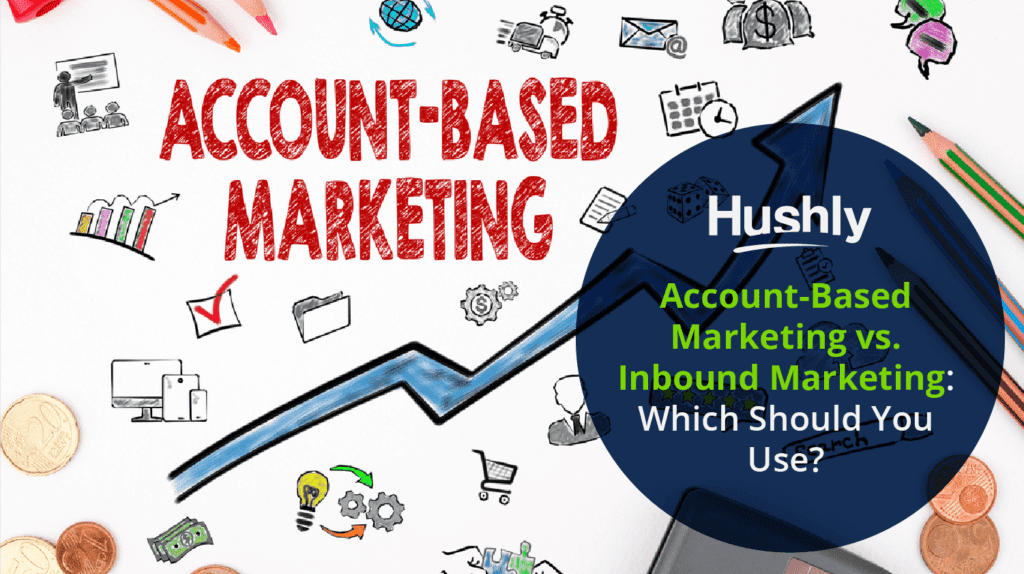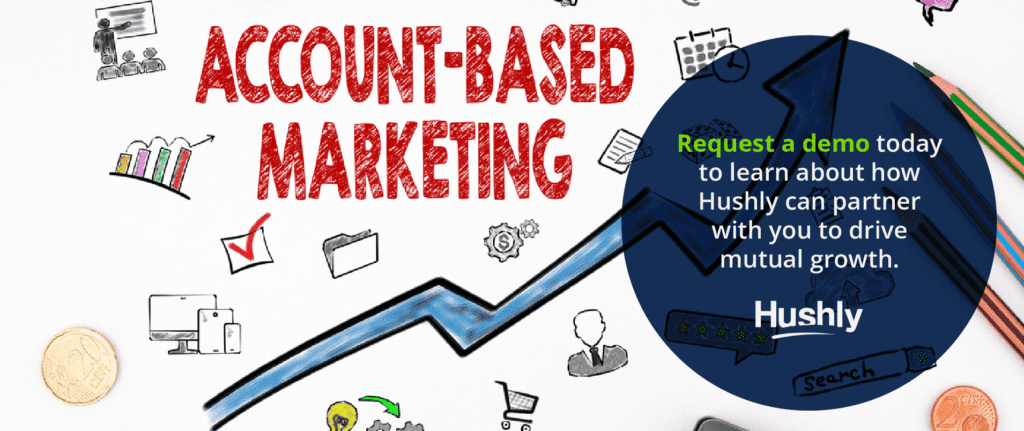Filters
Content Type
Topic
Account-Based Marketing vs. Inbound Marketing: Which Should You Use?
The marketing world continues to evolve toward a value-driven approach that includes account-based marketing as a fundamental component.
More personalized and targeted ads that speak directly to unique customers slowly replace the traditional way of marketing which focused heavily on inbound mass-awareness tactics, like TV ads. Does this mean inbound marketing is going to disappear completely?
The answer is no. There’s still a time and place for inbound marketing strategies despite the rise of ABM.
However, marketers today need to understand the purpose of each so they can find the right balance for their business. To do this, we’ll walk you through the definition of each as well as the best ways to deploy them to help your business grow. Ultimately, we’ll provide a list of criteria you can use to determine which approach makes more sense for your unique situation.

What is Account-Based Marketing?
Account-based marketing is a marketing framework that aims to generate unique marketing materials aimed at individual buyers. Your goal with account-based marketing is to build long-term relationships with customers by engaging them at every step of the sales cycle, including post-sale where you will attempt to get them back into the top of your sales funnel with timely and relevant promotions.
Account-based marketing has grown in popularity in recent years thanks to the industry’s overall shift toward more human-centered marketing. This is because account-based marketing enables a higher level of personalization and targeting compared to traditional inbound marketing methods. Customers love personalization, and buyers from all industries are becoming used to it, meaning marketers have to adjust to stay competitive.
Examples of Account-Based Marketing
Generally, account-based marketing attempts to target unique buyers (or groups of buyers) based on the sellers’ confidence that they can add value to the buyers’ lives. Any marketing tactic which aims to provide value on a long-term basis, with a focus on partnership and mutual trust, could be considered account-based marketing.
Here are a couple of concrete examples:
- Personalized Storytelling: Who is your customer and what do they care about? Telling a story with the buyer at the center of the narrative is a great way to demonstrate that you’re aware of the customer, their interests, and most importantly the human factor behind their business.
- ABM Email Marketing: Designing personalized and targeted emails with unique messages is a simple and effective way to do ABM marketing. For example, a welcome message should be sent to new customers, which includes key information about them and their needs.
Is Account-Based Marketing Inbound?
Account-based marketing is generally not the same as inbound marketing. However, you can and should take steps to ensure that inbound leads are treated to a similar level of personalization that an outbound ABM campaign could provide. Examples include personalized websites and customer journeys.
Regardless of how a customer enters your sales funnel, you can use ABM techniques to keep them around for longer and increase their customer lifetime value.
Is Account-Based Marketing Outbound?
ABM is outbound marketing that is highly personalized. The goal of ABM is to keep customers interested in your business and provide constant reminders of how your company is invaluable to their growth.
You can achieve this through relevant and contextual advertising and communication that always centers on the customer and their needs.
What is Inbound Marketing?
Inbound marketing is a marketing strategy that focuses on communicating with the entire marketplace at once instead of just a few targeted customers.
The idea behind inbound marketing is that if you broadcast your message widely enough, you will attract both customers who are ready to buy and those who are just interested in doing research for a possible future buy.
Examples of Inbound Marketing
Since inbound marketing is mostly focused on increasing brand awareness through mass-marketing tactics, any message that’s intended to reach an entire marketplace could be considered inbound marketing.
Here are four concrete examples of inbound marketing:
- Billboards, banner ads, and TV commercials advertise your brand and the general benefits of your product
- Non-targeted social media ads
- Influencer marketing, i.e., hiring influencers to promote your brand to their many followers
- In-store shopper marketing, where you place ads in-store strategically to draw attention and increase interest in your products
Can ABM Replace Your Inbound Marketing?
Most businesses will want to use a combination of inbound marketing and ABM. This is because, despite your best efforts, you can’t be aware of every customer in the marketplace. There may be valuable sources of revenue that you aren’t targeting simply because you don’t know they exist (and they may not know you exist, either).
Therefore, it makes sense to have a mixture of both inbound marketing that can generate awareness and create new leads for you to segment and an account-based approach that you can apply to your largest and most valuable customers.
3 Questions to Determine If You Should Use Account-Based or Inbound Marketing
Here are questions to ask that will help you decide if account-based or inbound marketing is better for your business.
1. What is Your Growth Strategy?
When thinking about your growth strategy, are you more interested in short-term growth to get your business off the ground and give you a foothold? If so, inbound marketing could be right. This is because inbound marketing will help you distribute your message to a wide audience, increasing the odds of contacting a few quality leads that you can then focus on building relationships with.
On the other hand, account-based marketing is best for developing business partners you can grow alongside. It will generate far fewer leads, but ideally far more high-quality leads.
2. How Strong is Your Understanding of the Market?
Do you have a solid grasp on who your ideal customers are and where to find them? Or do you feel that you’re in uncharted territory and aren’t sure who exactly your best business partners will be in the long term?
If you feel you know your market well and are ready to start developing those partnerships, ABM is the way to go. If you need more time to understand your customers and how your product best serves them, a traditional inbound approach can give you access to a wider variety of leads to learn from.
3. Is Your Product More Valuable in the Long Term or Short Term?
A simple way to determine if inbound or account-based marketing makes more sense is to ask yourself about your product.
If your product provides more value the longer you use it, then cultivating long-term customers who repeatedly buy and use upgrades is a fantastic strategy for building a steady revenue stream.
Alternatively, if your product is something customers buy and use quickly, then getting as many customers as possible is the best way to ensure you’re never running low on revenue.
Hushly Can Help You Combine Inbound and Account-Based Marketing Practices
It may not be necessary to entirely separate inbound and account-based marketing tactics.
At Hushly, we built our platform to maximize both worlds.
We do this by ensuring that each customer who comes into contact with your marketing content is treated to a personalized experience, regardless of how they got there.
By ensuring that all of your marketing content is relevant to buyers, whether they were targeted or not, Hushly can maximize your marketing efforts and help drive your growth.
Request a demo today to learn about how Hushly can partner with you to drive mutual growth.
The post Account-Based Marketing vs. Inbound Marketing: Which Should You Use? appeared first on Hushly.



